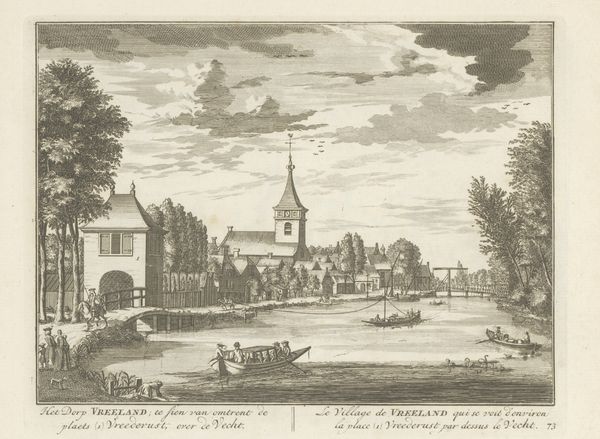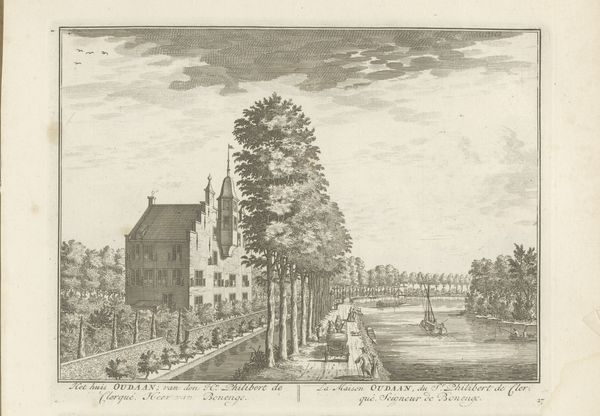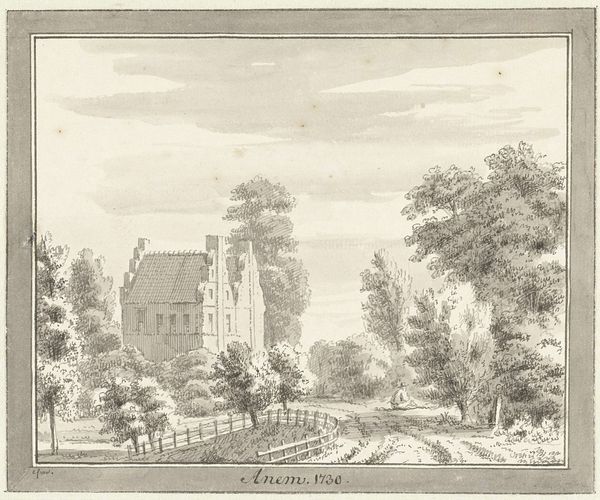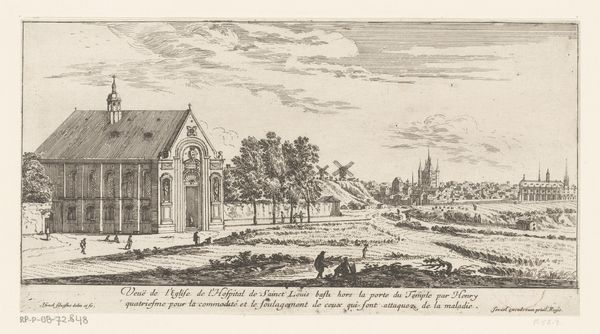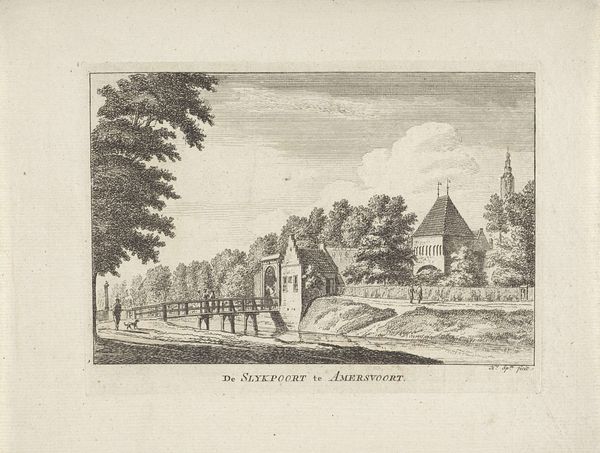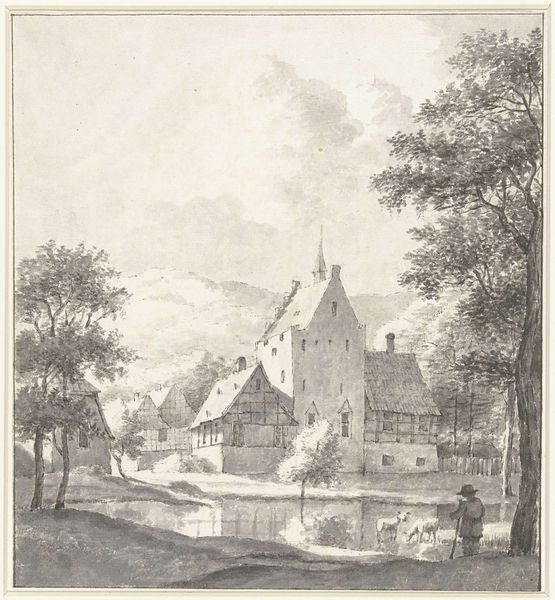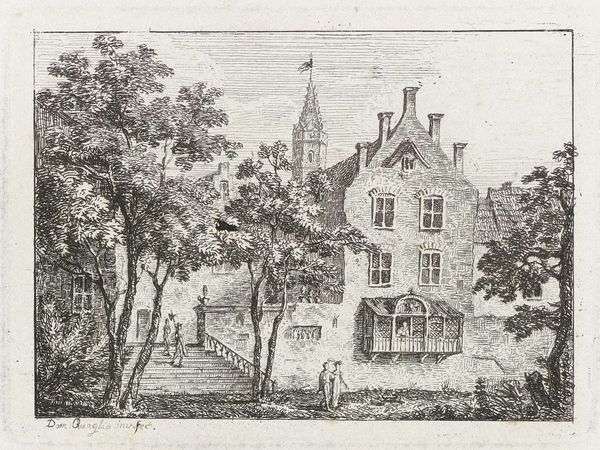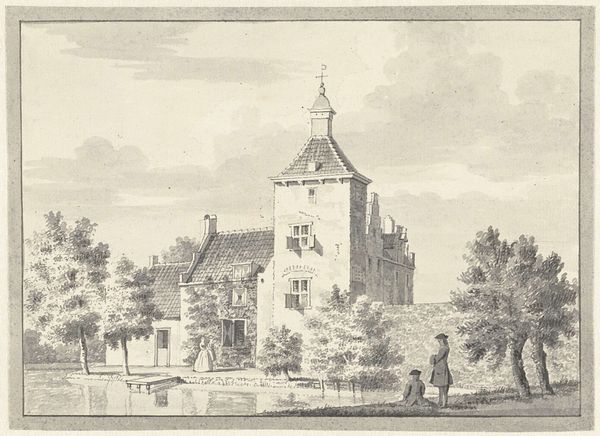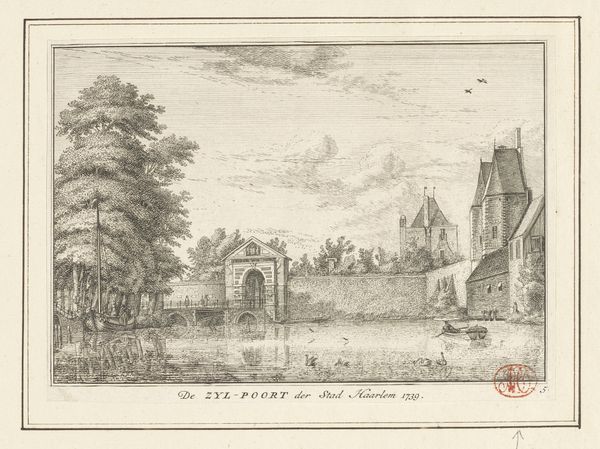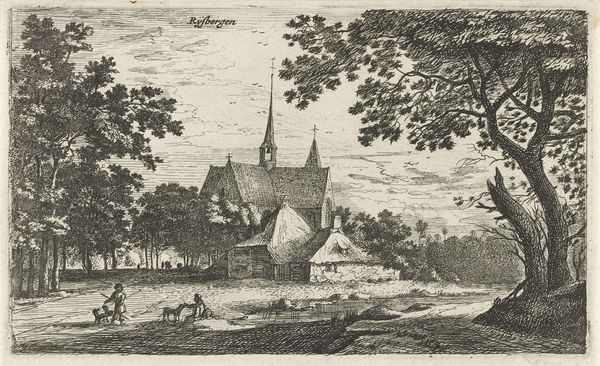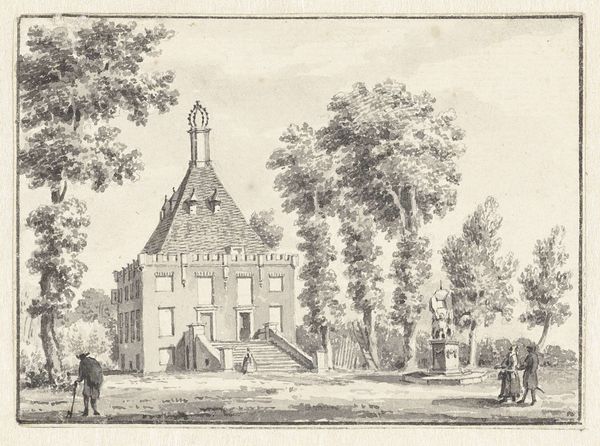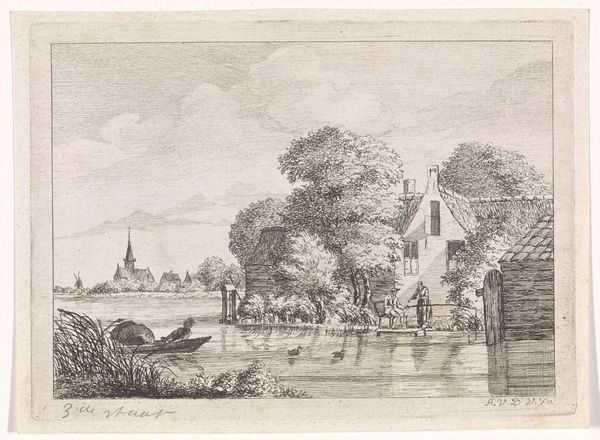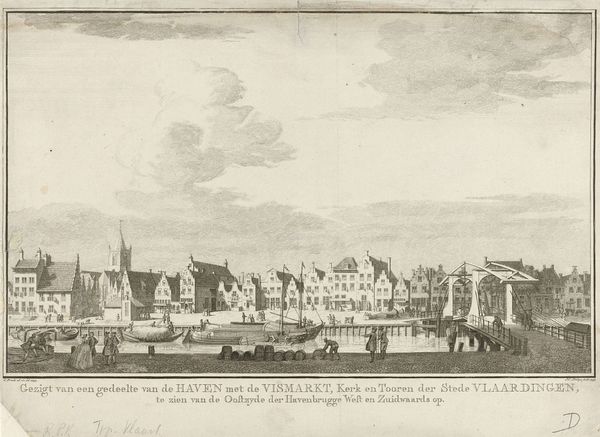
drawing, engraving, architecture
#
drawing
#
baroque
#
landscape
#
engraving
#
architecture
Dimensions: height 170 mm, width 202 mm
Copyright: Rijks Museum: Open Domain
Curator: Looking at this image, I immediately get a sense of carefully controlled, almost idealized order. It’s meticulously rendered, wouldn't you agree? Editor: Indeed. What we're seeing here is "Gezicht op Kasteel Rosendael vanaf het bos," which roughly translates to "View of Rosendael Castle from the Woods." It's attributed to an anonymous artist and was created sometime between 1675 and 1711. The artwork, held here at the Rijksmuseum, is created through drawing and engraving techniques. Curator: Engraving would demand great skill and a mastery of material. You'd have to consider what types of metal plates, tools, inks, and papers would produce an impression like this. Think about the etcher themselves; their working conditions, the politics of printmaking. Editor: Exactly. This piece speaks to the powerful Dutch elite who commissioned such landscapes. The image suggests a kind of ownership—a visual claim to the land and, by extension, to political dominance. The meticulous depiction reinforces the sense of control they had over both nature and the people dependent on it. The perspective flattens the workers and their landscape within this composition to prioritize the stately architecture. Curator: That relationship is compelling. Here we have humans, skilled laborers meticulously reproducing nature—yet, this production, this engraving, is essentially subservient to the aristocratic patron who owns and shapes the *real* land itself. Are these printmakers truly "artists," or simply craftspeople caught in the cycle of economic patronage? Editor: That's an interesting perspective, and something worth pondering. The house appears grand and solid, built to withstand the elements. This implies permanence and the enduring presence of this familial estate and all the implications therein, especially related to legacy and class power. Curator: Thinking materially, engravings like this were not produced for mass consumption. They were costly, exclusive. We should also recognize their connection to a flourishing international trading system which required the skilled work of draughtsmen. So many levels of fabrication lie hidden beneath what seems a placid pastoral view. Editor: I think you are absolutely correct. By centering class analysis, we have been able to better view, and interpret, the significance of Rosendael Castle's landscape as so much more than pretty scenery. Curator: Right. The labor to make, as well as the landscape represented. It all points to power dynamics in play at the time, especially with the rise of the international merchant class and trading blocs.
Comments
No comments
Be the first to comment and join the conversation on the ultimate creative platform.
